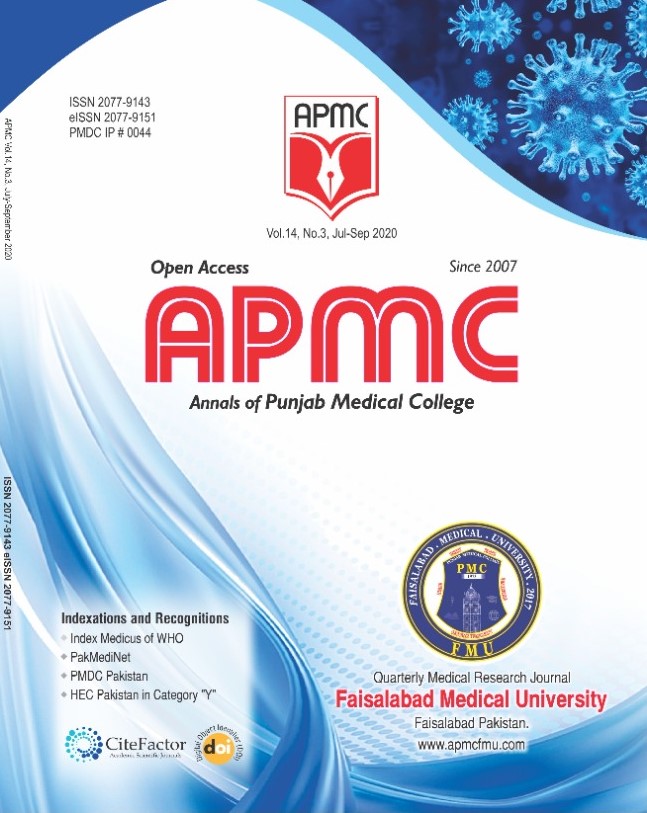Early Outcome of Balloon Pulmonary Valvuloplasty for Pulmonary Valve Stenosis in Adolescents and Adults: Experience at A Tertiary Care Cardiac Institute
Abstract
Background: Balloon pulmonary valvuloplasty is the procedure of choice for pulmonary valve stenosis in any age group. The data on efficacy of the procedure in adolescent and adult population is scanty in Pakistan. Objective: To determine the early outcome of balloon pulmonary valvuloplasty in adolescents and adults. Study Design: Descriptive retrospective case series. Settings: Pediatric cardiology department of Faisalabad Institute of Cardiology, Faisalabad-Pakistan. Duration: Three years and Six months from 01-01-2016 to 30-06-2019. Methodology: All consecutive patients of age 10 years or above who underwent percutaneous balloon pulmonary valvuloplasty in the study period were enrolled. The outcome parameters including successfulness and complications of procedure recorded. The procedure was labelled successful if peak to peak pressure gradient across pulmonary valve reduced to less than 50% or more of the pre procedure value, suboptimal if gradient reduced by 25-49% and unsuccessful if gradient reduced by less than 25%. Results: A total of 41 patients underwent balloon pulmonary valvuloplasty procedure. Mean age was 22.2± 10.5 years while female to male ratio was 1.05:1. Majority of the patients (n=26, 63.4%) were symptomatic and dyspnea on exertion was the dominant symptom (n=16, 39%). Majority of the patients had doming pulmonary valve (n=37, 90.2%). Mean balloon to pulmonary valve annulus ratio was 1.24 ± 0.1 (range 1.1-1.43). The procedure was successful in all patients (n=41, 100%) as the mean peak to peak pressure gradient across pulmonary valve decreased from 121.9 ± 53.2 mmHg (pre valvuloplasty) to 30.1±11.9 mmHg (post valvuloplasty) irrespective of doming or dysplastic valve. There were no major complications. Transient self-limiting vaso-vagal syncope was noted in 7.3% of patients (n=3). On post procedure echocardiography there was not a single case of moderate or severe pulmonary valve regurgitation (PR) while mild PR was observed in 48.8% patients (n=20). Conclusion: Balloon pulmonary valvuloplasty in adolescent and adult patients is a very safe procedure with high success but very low complications rate.

 This work is licensed under a
This work is licensed under a 